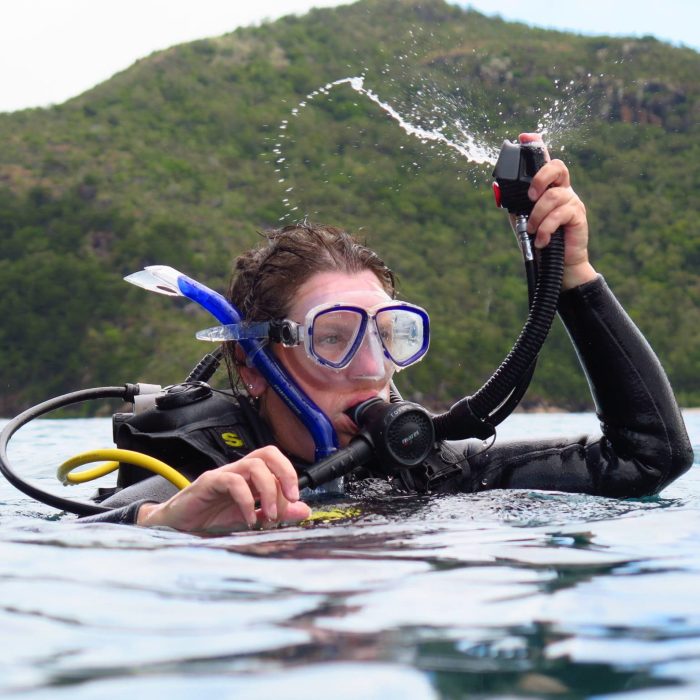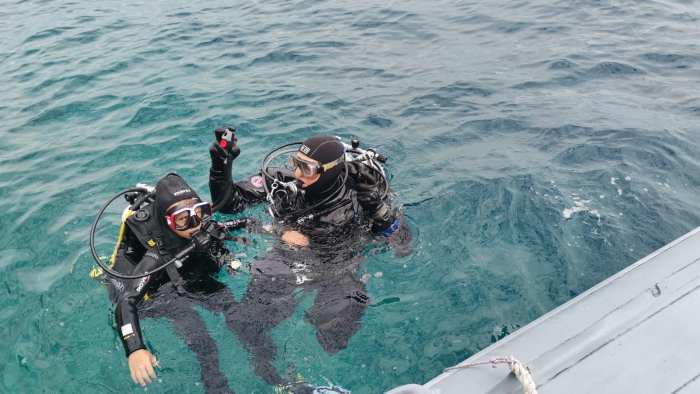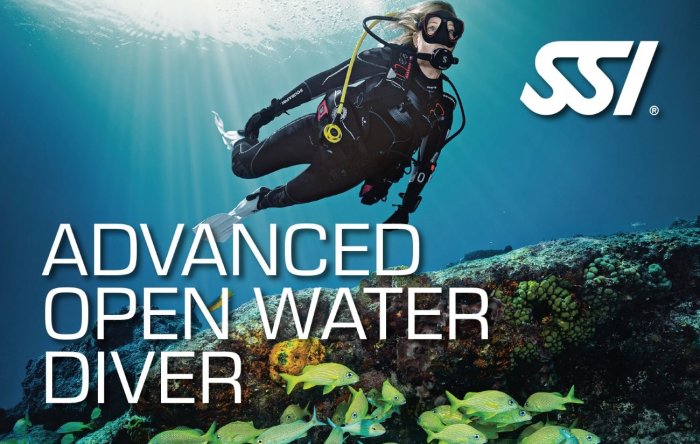Prepare to dive into the realm of underwater wonders with the SSI Open Water Diver Test. This comprehensive assessment equips you with the knowledge and skills necessary to explore the depths of the ocean safely and confidently.
As you embark on this journey, you’ll delve into the fundamentals of dive planning, underwater navigation, and buoyancy control. You’ll learn how to handle emergencies underwater, identify marine life, and protect the fragile ocean environment.
Dive Planning and Procedures

Dive planning and safety protocols are crucial for open water diving. They ensure divers have a safe and enjoyable experience while minimizing risks and emergencies. These protocols include planning the dive, following established procedures for entering, descending, ascending, and exiting the water, and maintaining proper buoyancy and communication.
Essential Steps in Planning an Open Water Dive
Before diving, divers should carefully plan their dive, considering factors such as the dive site, weather conditions, water temperature, depth, visibility, and currents. They should also assess their fitness level, experience, and equipment, and consult with a dive professional if necessary.
- Review dive site information, including depth, visibility, currents, and potential hazards.
- Check weather conditions and water temperature to ensure they are suitable for diving.
- Plan the dive profile, including depth, duration, and decompression stops.
- Select appropriate dive equipment based on the dive conditions and personal preferences.
- Brief dive buddies on the dive plan and safety procedures.
Procedures for Entering, Descending, Ascending, and Exiting the Water
Divers must follow established procedures for entering, descending, ascending, and exiting the water to maintain safety and avoid accidents. These procedures include:
Entering the Water
Divers should enter the water slowly and carefully, avoiding jumping or diving headfirst. They should hold onto the boat or shore and use a giant stride or back roll entry to minimize the risk of injury.
Descending
Divers should descend gradually, maintaining neutral buoyancy and controlling their descent rate. They should use a controlled descent technique, such as the CESA (Controlled Emergency Swimming Ascent) method, to prevent uncontrolled descents.
Ascending
Divers must ascend slowly and safely, following proper decompression procedures. They should maintain neutral buoyancy and make safety stops at designated depths to allow nitrogen to escape from their bodies and prevent decompression sickness.
Exiting the Water
Divers should exit the water slowly and carefully, using the same entry point or a designated exit ladder. They should remove their equipment safely and check for any injuries or equipment damage.
Underwater Navigation and Buoyancy Control

Underwater navigation and buoyancy control are crucial skills for divers to master. They ensure divers can safely explore underwater environments while maintaining a comfortable and controlled position.
Underwater Navigation
Underwater navigation involves techniques to determine a diver’s position and navigate underwater effectively. Divers use a combination of compass navigation and natural landmarks to find their way.
- Compass Navigation:Divers use a compass to determine their direction and orientation underwater. They must understand compass headings, declination, and variation to use it effectively.
- Natural Landmarks:Divers can also use natural landmarks, such as rock formations, coral reefs, or shipwrecks, to navigate. Identifying and remembering these landmarks helps divers find their way back to specific locations.
Buoyancy Control
Buoyancy control is the ability to maintain a neutral buoyancy underwater, which means the diver is neither sinking nor floating. Divers achieve neutral buoyancy by adjusting their buoyancy compensator device (BCD) and breathing patterns.
- BCD Adjustment:Divers can inflate or deflate their BCD to change their buoyancy. Inflating the BCD increases buoyancy, while deflating it decreases buoyancy.
- Breathing Patterns:Divers can also control their buoyancy by adjusting their breathing patterns. Inhaling increases buoyancy, while exhaling decreases buoyancy.
Buoyancy Control Exercises
Divers can practice buoyancy control exercises to improve their skills. These exercises include:
- Hovering:Divers practice maintaining a neutral buoyancy at a specific depth.
- Buoyancy Check:Divers perform a buoyancy check to ensure they are neutrally buoyant by slowly inhaling and exhaling.
- Weight Check:Divers check their weight distribution by swimming vertically and observing if they tend to sink or float.
Emergency Procedures and Problem Solving: Ssi Open Water Diver Test

Diving emergencies can arise unexpectedly, and it’s crucial to remain calm and execute appropriate procedures to ensure the safety of divers and companions.
Divers should familiarize themselves with emergency protocols for equipment malfunctions, lost divers, and decompression sickness to handle these situations effectively.
Equipment Malfunctions
Equipment malfunctions are common in diving, and divers should be prepared to handle them swiftly and calmly.
- Regulator failure:If a regulator fails, switch to the alternate air source and ascend slowly to the surface.
- BCD malfunction:If the BCD malfunctions, maintain buoyancy by using a snorkel and breathing normally.
- Mask flooding:Clear the mask underwater by exhaling gently through the nose.
Lost Divers
Losing a diving buddy underwater can be stressful, but remaining calm is paramount.
- Stay in place:Maintain your position and signal for help with a whistle or light.
- Search pattern:If possible, conduct a search pattern while remaining in visual contact with the surface.
- Ascend slowly:If the diver is not found, ascend slowly to the surface and seek assistance from the dive boat or other divers.
Decompression Sickness
Decompression sickness (DCS) occurs when nitrogen bubbles form in the body during rapid ascent.
- Symptoms:Joint pain, skin rashes, and dizziness.
- Treatment:Immediate recompression in a hyperbaric chamber is necessary.
- Prevention:Follow dive tables and avoid rapid ascents.
Marine Life and Environmental Awareness

Diving opens a portal to a vibrant underwater world teeming with diverse marine life. Divers may encounter an array of species, from tiny nudibranchs to majestic whales. Understanding and respecting these creatures is crucial for both the diver’s safety and the preservation of the marine environment.
Importance of Respecting Marine Life, Ssi open water diver test
Interacting with marine life requires a profound respect for their well-being. Divers should never touch, chase, or disturb animals. Maintaining a safe distance allows them to behave naturally and avoid stress or injury. Additionally, divers should be mindful of their buoyancy, ensuring they do not damage coral reefs or other fragile habitats.
Sustainable Diving Practices
Divers can actively contribute to the conservation of marine ecosystems by adopting sustainable practices. This includes using biodegradable sunscreen, avoiding single-use plastics, and properly disposing of waste. By choosing dive operators that prioritize environmental responsibility, divers can support businesses dedicated to preserving the underwater world.
The SSI Open Water Diver test is a certification for beginner scuba divers. Ben is in a hurry comma and needs to complete the test quickly. He can find more information about the test at ben is in a hurry comma . The test covers topics such as dive planning, underwater navigation, and emergency procedures.
Equipment and Gear

Diving equipment is essential for ensuring safety and comfort while exploring the underwater world. Let’s delve into the different types of gear and their proper use and maintenance.
Regulator
The regulator is a critical component that reduces high-pressure air from the scuba tank to a breathable level. It consists of a first stage, which attaches to the tank and reduces pressure, and a second stage, which delivers the air to the diver’s mouth.
Proper maintenance involves regular cleaning and inspection by a certified technician.
Buoyancy Compensator (BCD)
The BCD, also known as a buoyancy control device, allows divers to control their buoyancy by adjusting the amount of air in the device. This enables them to ascend, descend, and maintain neutral buoyancy. Regular inspection and maintenance are essential to ensure proper functionality.
Dive Computer
A dive computer is a sophisticated device that monitors dive depth, time, and other parameters. It provides real-time information, helping divers stay within safe limits and track their dives. Proper use and maintenance involve understanding the device’s functions and regularly replacing the battery.
Diving Suits
Diving suits provide insulation and protection from the cold and other environmental factors. Different types of suits are designed for various conditions:
- Wetsuits:Made of neoprene, these suits allow water to enter but trap a layer next to the body, providing insulation.
- Drysuits:Waterproof suits that keep divers completely dry. They are suitable for cold water or diving in contaminated environments.
- Semi-dry suits:A hybrid between wetsuits and drysuits, they offer some protection from water but are not completely waterproof.
Essential FAQs
What are the prerequisites for the SSI Open Water Diver Test?
You must be at least 10 years old and able to swim comfortably.
How long does it take to complete the SSI Open Water Diver Test?
The test typically takes 3-4 days to complete, including both classroom and in-water sessions.
What equipment will I need for the SSI Open Water Diver Test?
You will need basic diving equipment, including a mask, snorkel, fins, and buoyancy compensator device.
